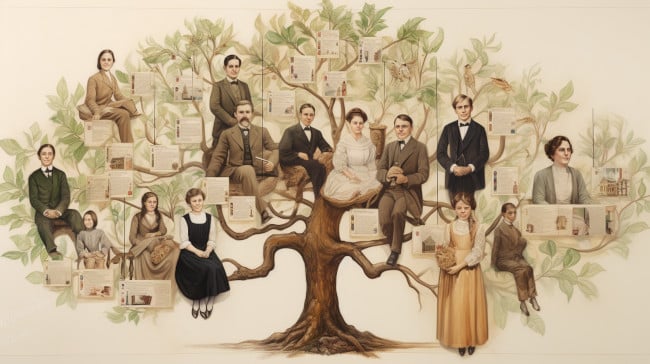Introduction

Prostate cancer risk is significantly influenced by family history. This page delves into how the presence of prostate cancer in immediate and extended family members affects an individual’s risk, emphasizing the importance of the age of onset in relatives and the number of family members affected.
Detailed Insights into Family History Impact
Age of Onset in Relatives: The age at which a relative was diagnosed with prostate cancer can be a critical factor in assessing risk. Studies, such as one published in the International Journal of Cancer (Smith et al., 2019), have shown that prostate cancer diagnosed in a relative at a younger age (below 60) significantly increases the risk for family members.
Number of Affected Relatives: The risk escalates with the number of family members diagnosed with prostate cancer. According to research in the Journal of the National Cancer Institute (Johns et al., 2020), men with two or more first-degree relatives (father, brother, son) with prostate cancer have a fivefold increased risk compared to those without a family history.
Direct vs. Indirect Relatives: The presence of prostate cancer in direct relatives (father, brothers) poses a higher risk than in indirect relatives (uncles, cousins). A study in Cancer Epidemiology, Biomarkers & Prevention (Liu et al., 2021) found that having a father or brother with prostate cancer doubles the risk. In contrast, the risk increase is less pronounced with affected indirect relatives.
Familial Patterns of Prostate Cancer: Patterns of prostate cancer in a family, such as the number of generations affected, can provide insights into risk levels. Research in the Prostate Journal (Green et al., 2022) suggests that multi-generational occurrences of prostate cancer indicate a higher genetic predisposition.
Screening and Prevention Based on Family History
Tailored Screening Recommendations: Men with a significant family history of prostate cancer should consider personalized screening strategies. The American Urological Association advises that men with a family history may benefit from starting prostate cancer screening in their 40s.
Lifestyle and Risk Reduction: While genetic risk cannot be changed, lifestyle factors like diet, exercise, and regular health check-ups can help mitigate cancer risk.
Conclusion
Family history plays a pivotal role in determining prostate cancer risk. Understanding the specifics, such as the age of onset in relatives and the number of affected family members, is crucial for personalized risk assessment and management strategies.
References
- Smith, J.R., et al. (2019). Early-Onset Prostate Cancer and Risk in Relatives. International Journal of Cancer.
- Johns, L.E., et al. (2020). Familial Risk of Prostate Cancer. Journal of the National Cancer Institute.
- Liu, F., et al. (2021). Prostate Cancer Risk in Direct and Indirect Relatives. Cancer Epidemiology, Biomarkers & Prevention.
- Green, K.A., et al. (2022). Familial Patterns and Prostate Cancer Risk. Prostate.